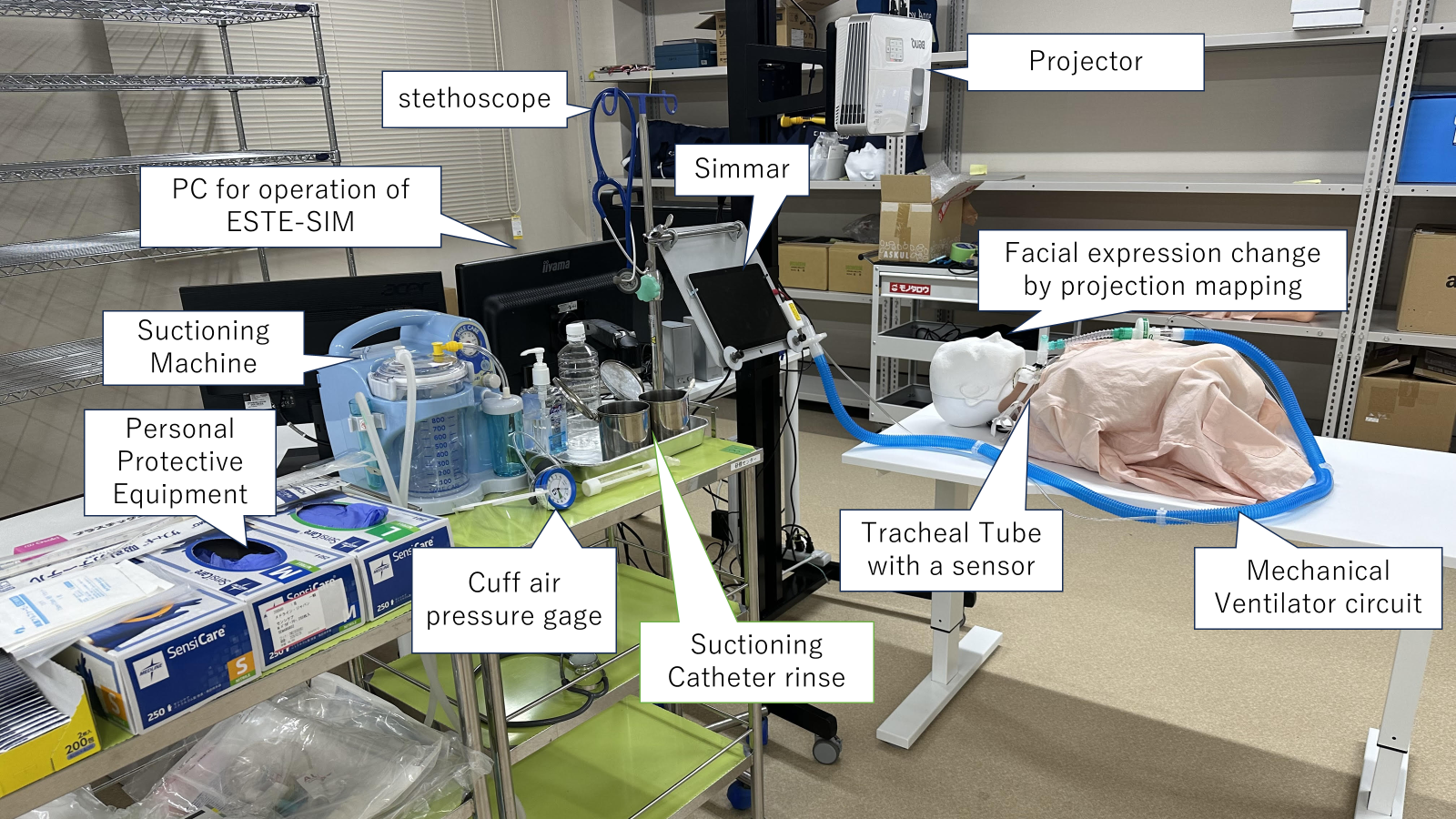Joint Release by Hokkaido University, Hiroshima International University, Kagawa University, Nagoya City University, Kyushu Institute of Technology, and International University of Health and Welfare.
A new simulator gives nursing students hands-on practice with vital procedures like mechanical ventilation and tracheal suctioning in children.

Simmar+ESTE-SIM, the novel XR simulator to train pediatric nurses. (Noriyo Colley, et al. Journal of Nursing Care & Reports. September 30, 2024)
Researchers at Hokkaido University in Japan have created a new training tool to equip nursing students with the skills needed in caring for children who require mechanical ventilation and tracheal suctioning. In a study published in the Journal of Nursing Care & Reports, the team highlighted the simulator's role in addressing the significant increase in children who need specialized medical care.
Recent statistics from the Ministry of Health, Labour and Welfare reveal a concerning trend in Japan: the number of children requiring medical care has doubled between 2011 and 2021. This increase is driven by several factors, including significant societal changes and a rise in complex medical conditions that need advanced interventions. Advancements in medical technology have also improved survival rates for critically ill children, resulting in a larger population that requires ongoing medical support. The Act on Support for Technology-Dependent Children and Their Families highlights a growing awareness of the needs of these vulnerable children and reflects a shift toward more home-based medical care.
The introduction of the simulator marks a considerable advancement in nursing education in response to evolving healthcare needs. Dubbed Simmar+ESTE-SIM, the simulator combines physical equipment with computer programs, to provide comprehensive training that equips future nurses to deliver high-quality care to children with specialized health requirements.
Professor Shinji Ninomiya of the Department of Health Sciences, Hiroshima International University, says, "Students can work on procedures like endotracheal suctioning and get immediate feedback on how they're doing, which really boosts their learning and confidence. This kind of practice is especially important in nursing because having the right skills is essential for providing effective care to patients."
"Our simulator helps nursing students practice important skills in a safe and controlled environment," explains Assistant Professor Noriyo Colley of Hokkaido University's Faculty of Health Sciences, the principal investigator of the ESTE-SIM project. "It uses immersive technology and realistic scenarios, so students get hands-on experience without the risks that come with caring for real patients."
"The term XR is an abbreviation of cross reality, which encompasses a group of emerging information technologies that combine the physical world with a digital world to create an immersive experience to some degree," she continues. "For instance, XR includes virtual reality (VR), augmented reality (AR), and mixed reality (MR), which provides a multisensory experience."
The simulator addresses the growing need for effective training programs that let nursing students develop critical skills in a risk-free environment. By equipping them with the confidence and expertise needed to care for vulnerable patients who need complex medical interventions, the simulator ensures that nurses are well-prepared to tackle the challenges of modern healthcare.
Original Article:
Noriyo Colley, et al. Learning Effects of Mechanical Ventilator/Tracheal Suctioning XR Simulators and Extracting Decision Making Criteria to Introduce a Novel Simulator. Journal of Nursing Care & Reports. September 30, 2024.
DOI: 10.47485/2693-2326.1051
Funding:
This research was supported by the Japan Society for the Promotion of Science (JSPS) KAKENHI (JP17H04425, JP19H03877, JP22H03701). The authors would like to thank the Comprehensive Educational Center, Chugoku Rosai Hospital, and Hiroshima Bunka Gakuen University for their generous cooperation in implementing the simulation education exercise.







